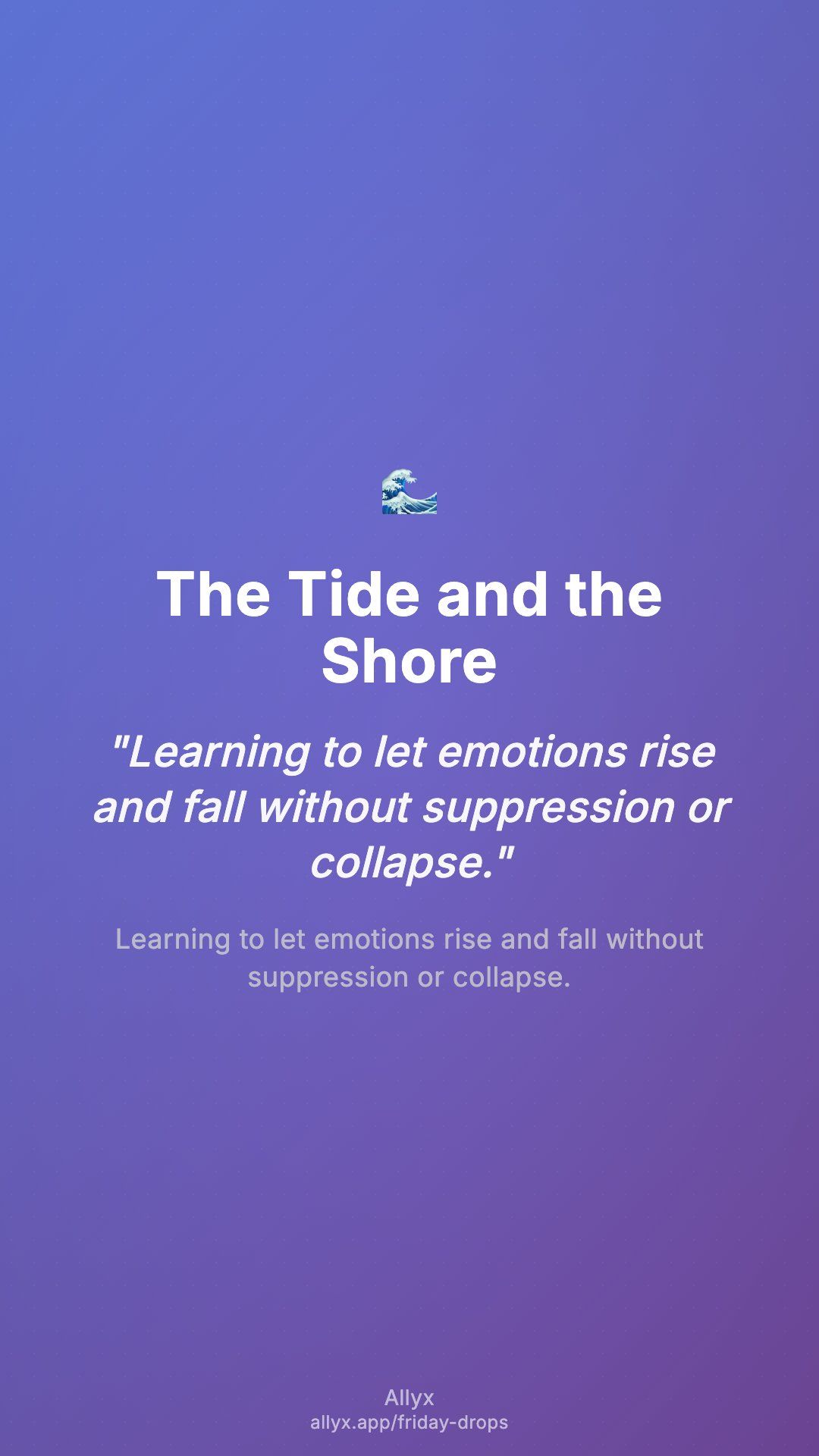The Tide and the Shore
Learning to let emotions rise and fall without suppression or collapse.
Thursday, October 2, 2025
Metaphorical Narrative
Stand on the shoreline and watch the waves.
They rise, crash, foam, and retreat. The tide never asks your permission. You can’t control the ocean — but you can learn to stand steady as it moves.
Some people fight the waves, thrash against them. Others turn their back and pretend they aren’t there. But the sovereign stance is neither fight nor denial. It’s allowing the tide to roll in and out, knowing the shore still stands.
Core Insight
Emotional regulation is not suppression; it is allowing arousal to crest and fall.
This act of “letting emotions breathe” rewires the amygdala–vmPFC pathway, recalibrating fear predictions. The feared collapse — “If I let this feeling happen, I’ll drown” — does not occur. Each time, proof builds: emotions rise, but presence remains.
Compassion for the self appears naturally when you see that intensity does not destroy you.
Saturday Experiment
When a strong emotion comes, pause.
- Place attention on the body sensation.
- Say silently: “Let this tide rise, let it fall.”
- Notice how, like waves, it shifts on its own.
Sunday Reflection
Write in third person: “When the tide rose, how did they prove they could stand as the shore?”
What evidence did their body give them that emotions pass, but identity endures?

